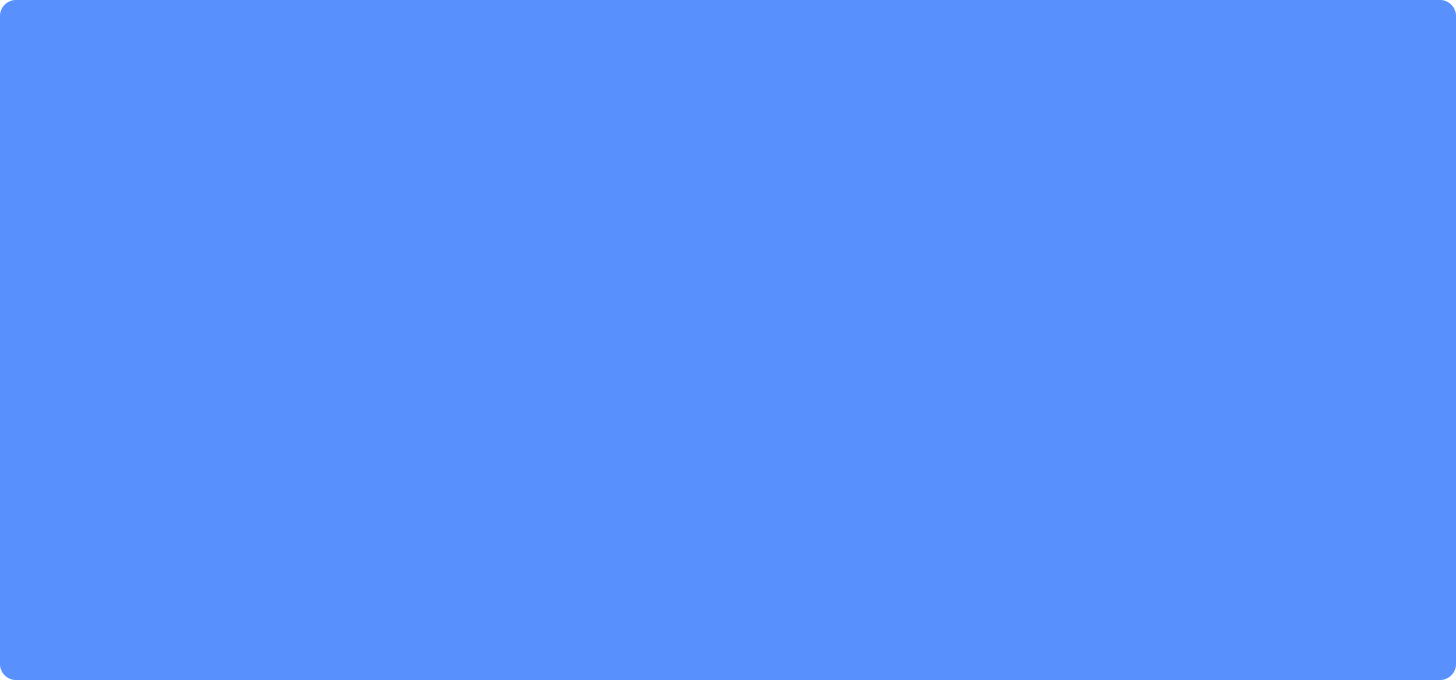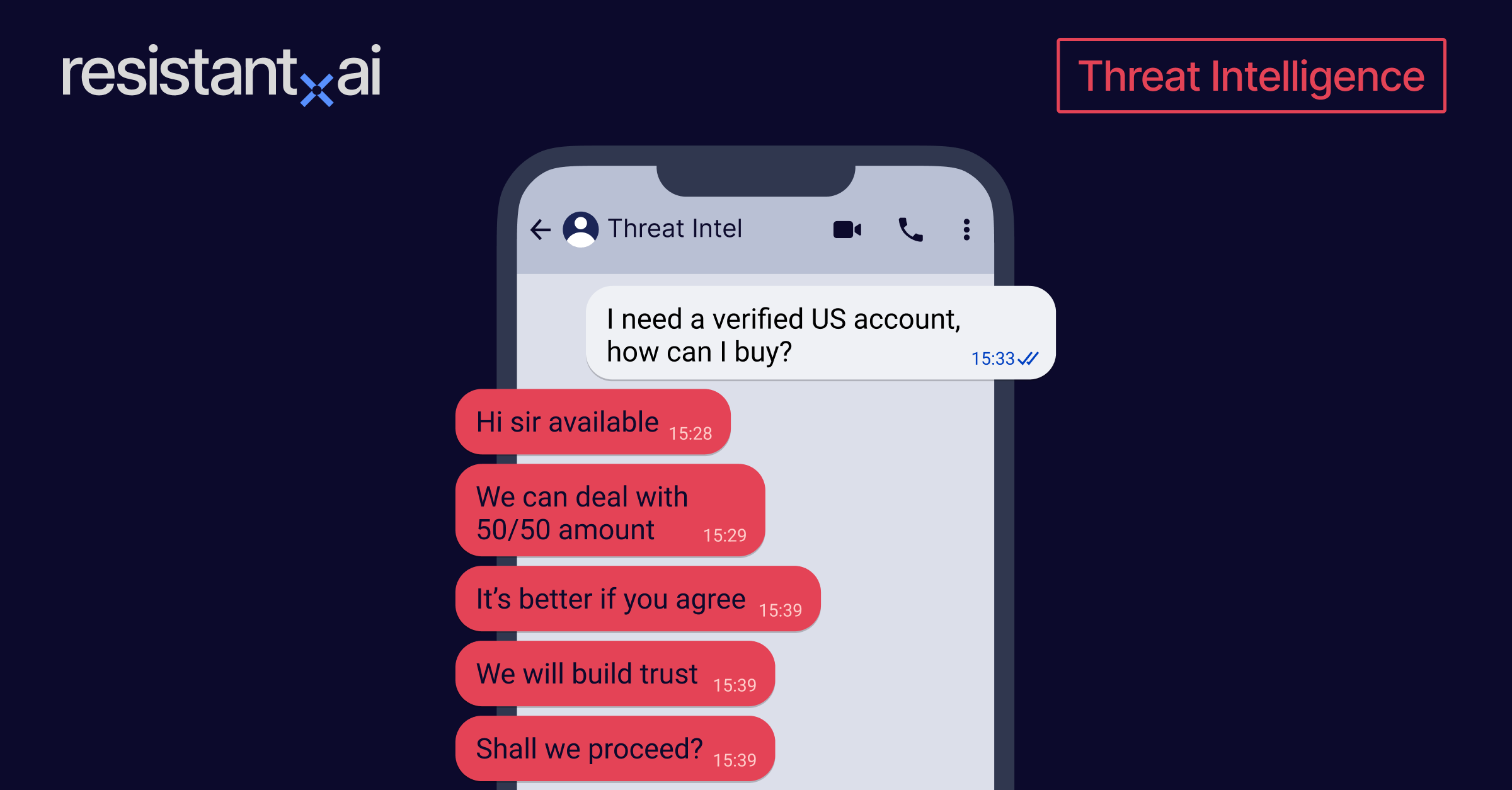How to spot business loan fraud



The risk of business loan fraud is exploding in volume and sophistication.
From falsified financial statements to poor business plans, malicious loan applicants are constantly creating new and more inventive ways to obtain funds illegally.
However, business loan fraud prevention efforts remain relatively stagnant at most institutions.
To keep pace with the criminals, institutions must educate themselves on tell tale signs of business loan fraud and invest in technologies that adequately defend their assets.
Since documents make up the bulk of any loan application process, lenders should be focused on B2B lending document fraud detection.
This can be done through stringent business loan underwriting guidelines, fraud detection specialists, and automated document verification tools for lenders.
Read on to learn what business loan fraud is, why its important, the 13 red flags of business loan fraud, and how your institution can use AI-powered fraud detection to combat it.
Check out our "How to spot fake documents" blog to learn about more common document forgeries.
Table of contents
What is business loan fraud?
Business loan fraud occurs when a company or individual intentionally provides false, misleading, or manipulated information during the loan application process to obtain financing they wouldn't otherwise qualify for.
This can involve falsifying documents, inflating revenue, hiding liabilities, or misrepresenting ownership or business operations.
Some of the documents included in the business loan fraud process are:
-
Bank statements. Altered to show higher balances, fake deposits, or consistent income.
-
Financial statements. (P&L, balance sheet): Manipulated to inflate revenue, hide debts, or improve financial ratios.
-
Tax returns. Forged or altered to match falsified income or expense claims.
-
Business licenses or registrations. Fake or expired documents used to prove operational legitimacy.
-
Articles of incorporation or certificates of incorporation. Falsified documents used to misrepresent business formation or legal status.
-
Invoices. Fabricated or altered to show fake clients, inflated receivables, or backdated transactions.
-
Contracts or purchase orders. Created to suggest revenue pipelines or business activity that doesn’t exist.
-
Personal identification documents. Used to misrepresent business ownership or tie applications to unrelated individuals.

An example of an Articles of Organization document (a common document forged for business loan fraud) for illustrative purposes only
How does business loan fraud work?
Business loan fraud typically involves misrepresenting financial strength, operations, or identity to deceive lenders and secure funding.
Applicants may submit doctored bank statements, fake invoices, or inflated financials to appear more creditworthy.
In more complex schemes, fraudsters use shell companies, borrower impersonation, or synthetic identities to apply for loans under false pretenses and then default without intent to repay.
What are the types of business loan fraud?
Business loan scams can take many forms, depending on the intent and method used to deceive the lender. Below are the most common types:
-
Income inflation fraud. Applicants exaggerate revenue, profits, or cash flow by submitting manipulated financial statements, tax returns, or bank statements to appear more creditworthy.
-
Fake business fraud. Fraudsters apply for loans under the name of a non-existent or inactive company, often using fabricated incorporation documents and licenses.
-
Misuse of funds. Funds are secured under the pretense of business growth or operational needs, but are diverted to personal use, non-business investments, or criminal activity.
-
Identity theft and impersonation. A real business owner’s identity or documentation is stolen and used to apply for loans without their knowledge.
-
Straw borrower schemes. A third party applies for the loan on behalf of another individual or entity, often concealing the true beneficiary to bypass credit checks or eligibility requirements.
-
Document forgery. Includes falsifying or altering supporting documents such as bank statements, invoices, tax filings, contracts, or purchase orders to meet lender requirements.
-
Collateral misrepresentation. Borrowers overstate the value of business assets or use ineligible or non-existent collateral to secure the loan.
-
Synthetic business identity fraud. Fraudsters create entirely fake business entities by combining real and fake information to build a credible profile over time and apply for credit.
If you’d like to know how fraudsters are creating all these fake business loan documents, check out our “Types of fraud” blog to learn more about their tactics.
Why do people commit business loan fraud?
People commit business loan scams primarily to access capital they wouldn’t otherwise qualify for, often due to poor credit, low revenue, or ineligible business status.
Some do it to survive financial hardship (falsifying documents to keep a struggling business afloat) while others do it with criminal intent, aiming to extract funds quickly and default without repayment.
In more complex cases, fraud is driven by organized schemes that exploit gaps in underwriting processes or regulatory oversight to repeatedly siphon funds from multiple lenders.
Motivations can include:
-
Hiding financial distress or insolvency
-
Expanding business operations with insufficient capital
-
Funding personal expenses through business lines of credit
-
Bypassing strict lending requirements (credit score, revenue threshold, documentation)
-
Defrauding multiple institutions using shell companies or synthetic identities
13 Signs of business loan fraud
Now that you have an understanding of business loan fraud, it's time to start identifying it at your institution. By keeping track of the following business loan red flags, you'll be able to secure you loan process.
1. Fake or forged documents
In every business loan application, submitted documentation is the gateway to understanding each applicant–in terms of behavior, habits, and creditworthiness.
These documents can range from bank statements to pay stubs, depending on the type of loan applied.
In order to know how to avoid fraud in digital lending, invest in a document verification solution to scale your submission process and spot fake documents automatically.
If you're still trying to spot document fraud manually, pay close attention to easily identifiable visual discrepancies such as fonts, formatting, etc.
If any document shows sign of forgery during the underwriting process it is a clear indication of a business loan scam.
2. Lack of audited financial statements
Any document can be falsified, and that includes financial statements or bank statements. That's why requiring applicants' documents to be audited during this process is very common.
Auditing enforces the reliability and transparency of official documents via an additional layer of verification by an independent third party.
If an applicant refuses to provide audited documents or provides unaudited materials when an audit is required, that can be an indication of business loan fraud.
3. Financial discrepancies and abnormalities
Once an applicant submits their financial documents, a lender can then assess the actual contents of their statements. Keep an eye out for the following red flags related to monetary gains or losses:
-
Irregular transactions. Abnormal amounts not aligned with the business.
-
Late payments. To creditors, other lenders, loan repayments, and even bankruptcies.
-
Repeated changes. In bank accounts, company assets, overdrafts, and external auditors.
-
Inflated revenue. Profits and assets that are not audited or aligned with the market value.
-
Multiple credit lines. If they have multiple lines of credit from different financial institutions and lenders.
-
Never payments. A business never makes a single payment on existing debts.
-
Suspicious requests. Unusual loan requests and repayment terms that deviate from the standard.
-
Poor or unrelated assets and cash balances. Low amounts even though the business is earning high profit.
4. Data discrepancies
Data discrepancies are one of the clearest indicators of potential business loan fraud, especially when key financial or identity details don’t align across submitted documents.
Inconsistent figures between bank statements, tax returns, and profit-and-loss statements can signal intentional manipulation meant to inflate revenue or hide liabilities.
Even a small mismatches in reported income or account balances can be a red flag when they occur repeatedly or conflict with verified third-party data.
Discrepancies in business identity details—such as mismatched addresses, conflicting incorporation dates, or differing business names across forms—can also suggest that the applicant is misrepresenting the company’s legitimacy.
5. Poor physical presence
Most brick-and-mortar businesses should have a physical presence in each location.
This could range from an office to a store but it should be searchable and identifiable on applications such as Google Maps.
When it is not listed or visible on applications, it is a huge red flag that could indicate a ‘shell’ company.
6. Abysmal business plan
Once a business requests funding, its viability is highly dependent on the type of operations and value it can bring to consumers.
Analyzing and assessing their business plan can help indicate whether or not this business is actually viable (and likely to exist).
Poor objectives, high costs with unsustainable revenue forecasts, and unclear target markets are usually signs of poor business planning and, consequentially, business loan fraud.
7. Applicant behavior
A loan applicant’s behavior goes a long way in helping lenders understand their trustworthiness and the possibility of defaulting payments.
While good behaviors are easy to mimic, bad (and fraud indicative) customs can be a clear give away of business loan fraud.
Some of these traits can include:
-
Incessant (repeated and excessive) loan applications either as an individual or business.
-
Unwillingness to verify or provide more information.
-
Repeated requests or pressure for the approval of the loan.
8. Poor press and reputation
For lenders, paying attention to the media and recent news can also be a clear indicator of business loan fraud.
When a business becomes notorious in the press (for any situation), it should (at the very least) cause hesitation during the loan approval process.
Don't just use the news or social media. It's also important to consider winding-up petitions or other legal issues that are part of a public record.
As a business, any form of bad press tends to have repercussions such as poorer brand image, dipped revenue, and many others. This could indicate financial distress and a potential default on loan repayments.
9. Repetitive changes
Another key point to note is recurring and overly frequent changes to information during the application process. For example, the number of times the business has changed its external auditors.
If these changes are sudden or happening too frequently (especially when facing trouble signing off accounts) it can be an indication of poor financial performance and management within the organization.
This could highlight the firm’s inability to pay punctually or shed light on its lack of reliability, giving adequate cause for concern when it comes to business loan approval.
10. Sudden disruptions
Stability is key for any organization. When there are sudden disruptions (such as loss of dominant suppliers, termination of product supplies, and even late or phantom delivery of products) it can indicate poor management or financial distress.
These concerns are warning signals that highlight a business’s poor performance and ability to manage crises.
11. Deferred capital expenditure
Deferred expenses can range from advertising costs to prepayments of rent or insurance.
When an organization has a large sum or consistent habit of huge deferred capital expenditure, it can be a potential risk for lenders or financial institutions.
Businesses must obtain more information on deferred expenses and how it can affect the company’s finances in the fiscal year before approving a loan.
12. Declining market
Businesses that fails to have demand, will not be able to sustain itself long term. If a business' market appears to be declining but the applicant is reporting success, that can be indicative of fraud.
For financial institutions, assessing the market and the business' place within it is key to comprehensive analysis. This can reveal unexpected amounts and transactions that might not appear anomalous at first.
13. Multiple businesses and no references
Having multiple businesses with no verifiable reference—such as websites, tax records, or online presence—can be a strong sign of business loan fraud.
Fraudsters often create shell companies or register multiple entities on paper to fabricate legitimacy, inflate income streams, or submit repeated loan applications under different business names.
When these businesses lack public footprints, digital trails, or consistent documentation, it suggests they may exist solely to exploit the lending system rather than conduct real operations.
In many cases, these entities are used to spread out applications and avoid detection through volume-based fraud tactics like loan stacking or identity rotation. The absence of any traceable activity raises red flags for lenders and verification teams trying to confirm whether the business is active, compliant, or even real.
How to prevent loan application fraud
No matter the type of loan, the best way to prevent loan application fraud is through investing in B2B fraud detection software and methodologies. The approach must be layered and comprehensive, filling in gaps and leaving no weak spots for fraud to slip through.
Here are some ways to start:
Train in-house fraud detection specialists
A company’s best asset is their employees. Eradicating business loan application fraud is a collective effort.
Develop internal members (such as fraud detection specialists and underwriters) to remember universal indicators while keeping them updated on the latest tactics of fraud perpetrators and defenders alike.
This includes technical training on how to use advanced fraud detection techniques in loan underwriting and AI-based document verification for business loans.
But it doesn't stop there. Companies must develop a secure culture of knowledge transfer to share insight, prevents leaks, and increase internal vigilance.
Develop strict standards (and stick to them)
Setting strict standards during document collection is essential. Provide a stringent list of documents, their relevant formats, and clear guidelines on acceptable levels of quality, immediate disqualifiers, and when to add friction.
For example, official documents such as bank or financial statements, bank reconciliations credit card statements, etc are usually in PDF format. One strict policy could be to immediately deny any document that isn't a PDF.
How to detect business loan fraud
After putting preventative measures in place, the next step is detecting fake, forged, or manipulated documents during the business loan application process.
Lenders can either conduct fully manual reviews or incorporate automation to flag suspicious applications.
While manual review can work for small volumes or high-risk exceptions, we find it slower, less scalable, and more prone to errors than AI-powered fraud detection.
Conducting manual underwriting to spot business loan fraud
Experienced analysts or underwriters can often spot obvious red flags by comparing submitted documents like bank statements, tax returns, and profit-and-loss reports.
They rely on experience and pattern recognition to identify inconsistencies, such as mismatched revenue figures between documents, unregistered businesses, or payers on invoices that don’t exist.
Manual review may uncover forged documents, but it requires significant time, subject-matter expertise, and still leaves room for human oversight.
Keep in mind: Manual processes don't scale with high application volumes and are vulnerable to increasingly sophisticated fraud tactics. To combat business loan fraud effectively and consistently, AI-based document verification is the modern standard.
Using AI and machine learning software to spot business loan fraud
Detecting fake business documents manually (especially when dealing with shell companies or doctored financials) is no longer practical.
The most efficient and accurate approach is to adopt AI-powered verification tools that analyze every submitted document and detect tampering, synthetic identity usage, or financial manipulation.
Some of the benefits of AI for spotting business loan fraud are:
Save time
Business loan decisions often depend on reviewing multiple data sources—bank statements, incorporation documents, tax filings, and invoices. AI fraud detection can analyze all of these in seconds.
Where manual review might take 45–60 minutes per file, AI can flag anomalies (like identical deposits, duplicate invoices, or mismatched tax data) in under a minute.
Institutions using AI solutions like Resistant AI cut down their document review time drastically, allowing for faster conditional approvals and improved customer experience.
Save money
Business loan fraud leads to massive financial losses, including unpaid loans, legal recovery costs, and damaged portfolio performance.
AI solutions catch document fraud early in the application process—before funds are disbursed—preventing defaulted loans and reducing exposure to coordinated fraud rings.
By flagging fraud before the loan is issued, institutions avoid costs related to collections, litigation, and regulatory fines.
Save relationships
Financial institutions rely on trust—but misplaced trust in fraudulent borrowers leads to operational risk and reputational damage.
AI tools help lenders identify high-risk applications with precision, so they can confidently approve funding for legitimate businesses.
This strengthens borrower-lender relationships without compromising on due diligence or compliance.
Other Benefits
AI fraud detection in business lending can also:
-
Speed up loan decisions
-
Detect synthetic identities and shell companies
-
Connect suspicious patterns to prior fraud cases
-
Improve risk scoring and underwriting accuracy
-
Seamlessly integrate into existing workflows
-
Support regulatory compliance
-
Scale verification as application volume grows
Conclusion
To eradicate business loan application fraud, being vigilant is no longer enough. Lenders need to adapt their business loan underwriting with modern technology to adequately spot fraud at scale.
With Resistant AI's document forensics software, verifying any document, whether a PDF or image, takes less than 20 seconds, and can speed up review processes fivefold while still catching 3x more fraud to mitigate risks and protect themselves from fraud.
Want to see it in action? Scroll down to book a demo.
Frequently asked questions (FAQs)
How to spot business loan fraud with AI
AI can detect business loan fraud by analyzing submitted documents (like bank statements, tax returns, and incorporation papers) for inconsistencies, formatting anomalies, and metadata manipulation.
It cross-references data points across documents and external sources to flag suspicious patterns, such as income inflation, shell companies, or duplicate applications.
This allows lenders to catch fraud attempts before loans are issued, even when manual review might miss subtle or well-crafted forgeries.
Is there a software for detecting business loan fraud?
Yes, software solutions like Resistant AI offer document verification tools specifically designed to detect business loan fraud.
These tools use machine learning to automatically scan for signs of tampering, synthetic identities, and financial misrepresentation.
They integrate with loan origination systems to provide real-time fraud detection at scale, reducing losses and improving approval accuracy.
What’s the difference between business loan fraud and loan default?
Business loan fraud involves intentionally deceiving a lender to obtain financing through fake documents, false claims, or misrepresentation.
Loan default occurs when a borrower fails to repay a legitimate loan, often due to financial hardship or mismanagement, without necessarily committing fraud.
In short: fraud happens before or during the loan approval process; default happens after the loan is issued.
Who needs to detect business loan fraud?
Here are some of the most common roles with the responsibility of business loan fraud detection:
-
Loan underwriters. Review application documents to ensure the borrower and business are legitimate and financially sound.
-
Fraud analysts. Investigate suspicious patterns and behaviors across applications to prevent coordinated or high-volume fraud attempts.
-
Compliance officers. Ensure that lending practices adhere to regulatory standards and that fraudulent entities are identified before funds are released.
-
Risk managers. Evaluate overall exposure to fraud and implement systems to reduce financial and reputational risk.
What to look for in an AI-driven business loan fraud detector?
AI and machine learning greatly enhance a company’s business verification processes by improving precision and accuracy in detecting fraudulent business loan application documents—with low false positives. Here are five essential components that a good AI document fraud detection software should have:
-
High accuracy. An AI-powered document fraud detector must verify business loan application documents with a high level of accuracy to give underwriters the confidence to process large volumes swiftly. This includes identifying subtle signs of forgery, fake templates, and other fraud indicators that are often undetectable to the human eye, ensuring that fraudulent documents don’t slip through the business loan underwriting processes.
-
Support for multiple document formats. An AI document fraud detection software that analyzes different document formats like PDF, JPEG, and PNG facilitates smoother business loan underwriting processes by giving customers more options to submit documents.
-
Clear verdicts. A high-quality AI document fraud detector should deliver clear verdicts that require no further interpretation, allowing you to approve or deny business loan application documents based on clear, evidence-backed results, thereby minimizing potential risks.
-
Explainable results. Explainable results enable underwriters to understand the risk each business loan application document carries, helping them assess its authenticity and verify an applicant’s details.
-
Configurable to match your risk appetite. The best AI document fraud detector can be configured by businesses to detect outcomes with their risk appetite—only approving business loan application documents that only come in certain formats, for example.







